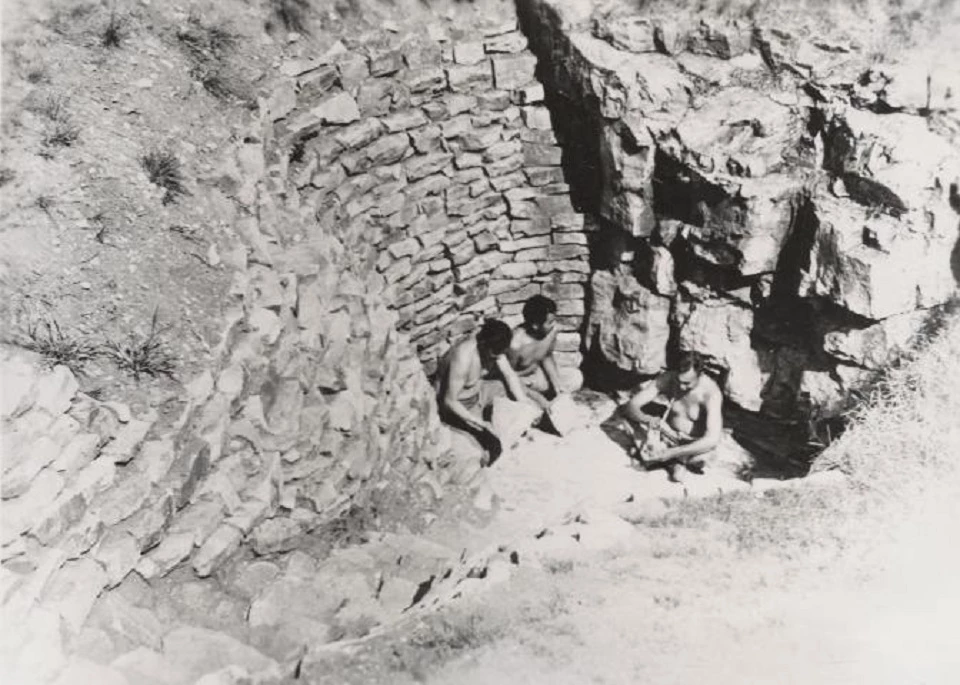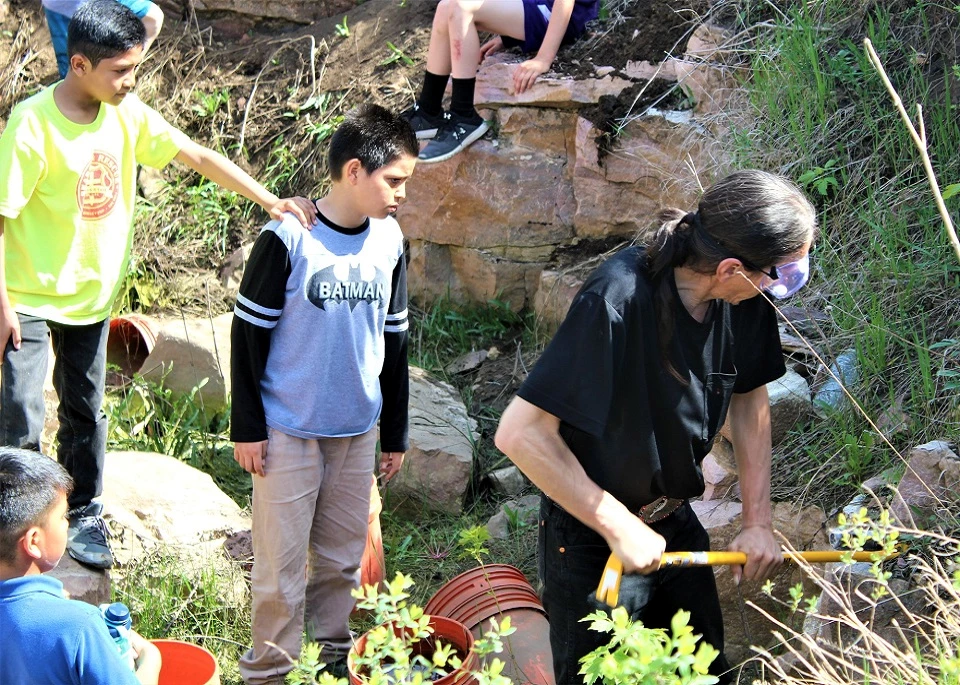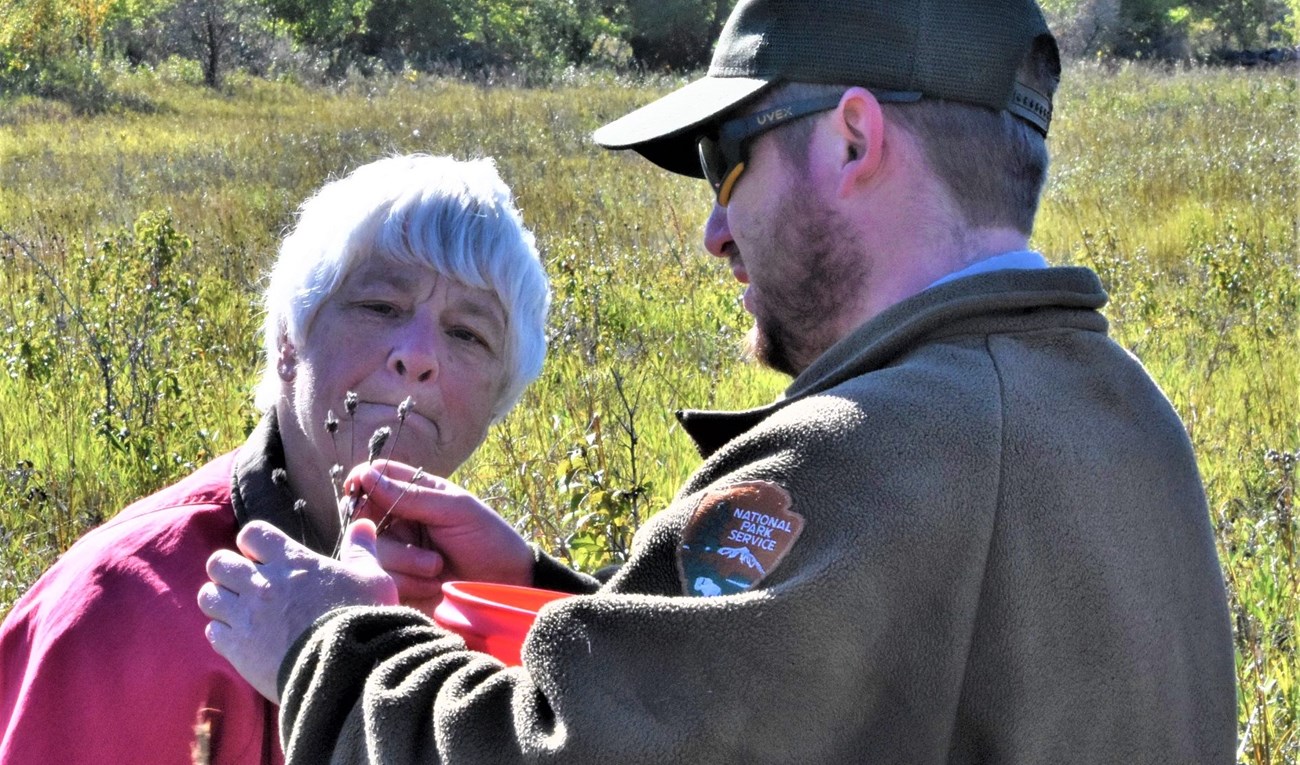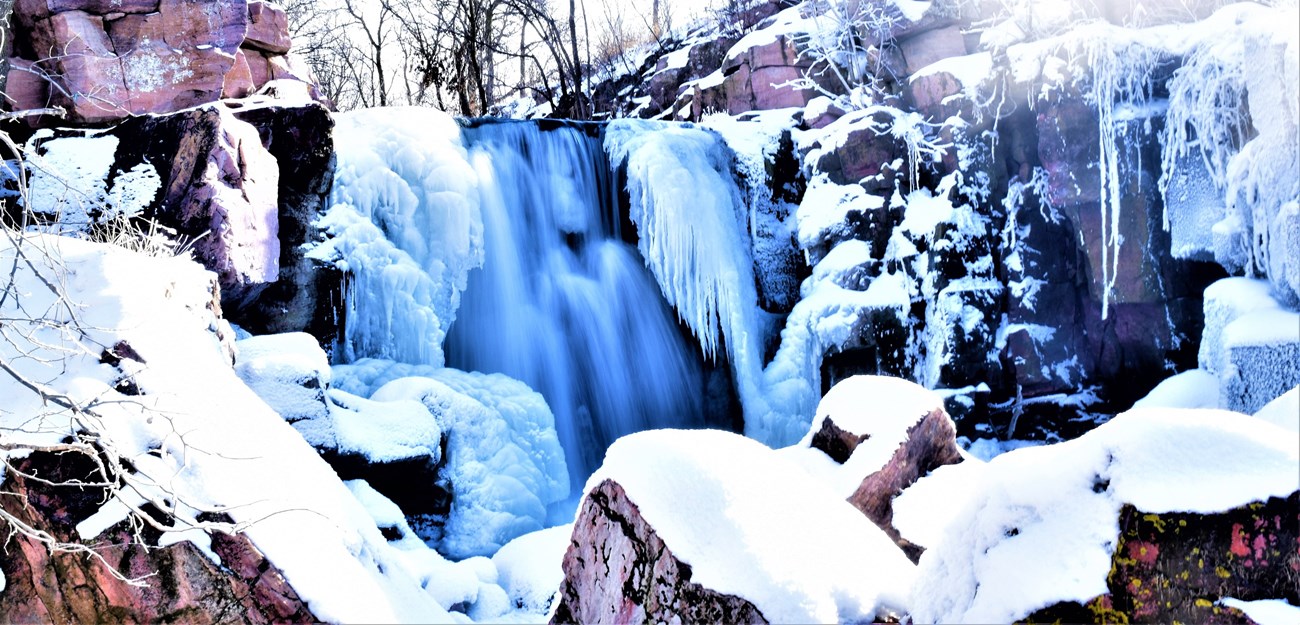Last updated: November 2, 2020
Article
National Park Getaway: Pipestone National Monument
By Natalie Barber, Park Ranger, Pipestone National Monument
“When you pray with this pipe, you pray for and with everything.” – Black Elk


Left image
Quarriers holding stone and a pipe in a quarry pit that was later turned into an exhibit quarry for visitors to walk into.
Right image
Quarrier and pipe carver Francis Eastman teaching the next generation.
Credit: NPS / N. Barber

NPS / N. Barber
From April through October, cultural demonstrators work on site carving pipestone and talking with visitors about the meaning and process behind these traditions. Visitors also have the opportunity during the busy season to join a variety of free outdoor programs such as guided tours, night sky viewings, day camps for Junior Rangers, a Christmas Bird Count, and an annual luminaria event on Indigenous Peoples’ Day featuring American Indian musicians and storytellers.
For those who like to explore on their own, the site is self-guided year-round. Visitors can walk the paved three-quarters-mile Circle Trail that meanders past a wide array of natural, historical, and cultural features such as historic quarry pits, tallgrass prairie, beautiful quartzite outcroppings, and even a waterfall. The one-quarter-mile South Quarry Trail takes visitors to the Three Maidens, a culturally significant site that adjoins a picnic area. Hardy visitors who aren’t afraid of Minnesota winters or just want to see a frozen waterfall can take advantage of the site’s free snowshoe checkout after January 1 each year.

NPS / N. Barber
The Visitor Center boasts new cultural exhibits that were developed with the input of 23 affiliated Tribal Nations, petroglyphs, a 22-minute award-winning film, and a store that supports both the park and the development of American Indian artists. Kids can get their Junior Ranger book at the front desk to learn a little more about the park and try to earn a badge while they’re here.
The Monument is approximately an hour from Sioux Falls, South Dakota and is easily reached from I-90 or I-29 (follow signs from US 75, MN 23, or MN 30). Admission is free and the Visitor Center is open daily year-round, except for Thanksgiving Day, Christmas day, and New Year’s Day (the grounds do not close).
